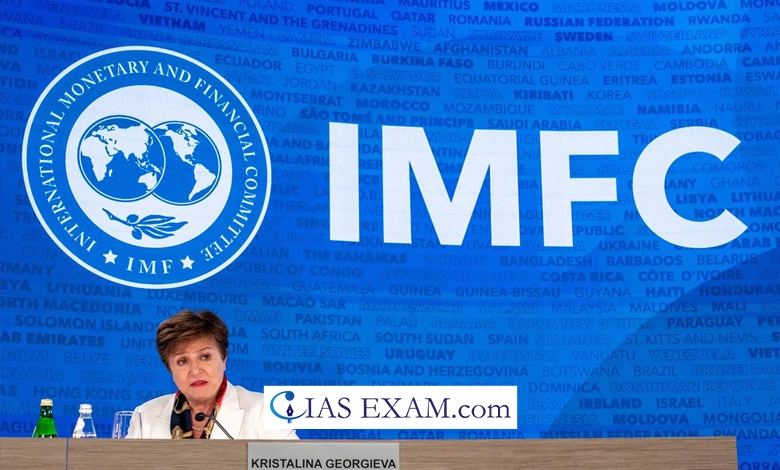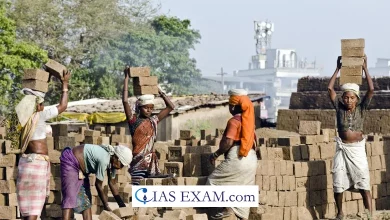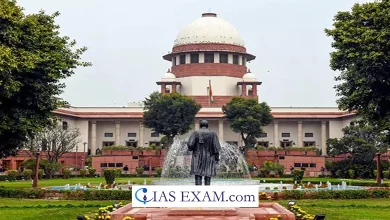Daily Current Affairs for UPSC
IMF’s concern over Fiscal Challenges Confronting Low-income countries
Syllabus - Economy [GS Paper-3]

Context
The International Monetary Fund (IMF) has recently expressed its concern over the debt and fiscal challenges confronting low-income countries.
Key Highlights
- The IMF reduced its 2024 growth forecast for low-income countries as a group to 4.7% from an estimate of 4.9% in January.
- Meanwhile, the World Bank cited a regarding fashion wherein half of the sector’s 75 poorest countries are experiencing a widening income gap with wealthier economies, marking a reversal in development progress seen earlier this century.
Fiscal challenges of low-income countries
- In Sub-Saharan Africa, presently countries face debt service payments of 12% on average, compared to 5% a decade ago.
- In a few countries debt bills are up to 20% of revenues. Those countries had far fewer resources to put money into education, health, infrastructure and jobs.
- High interest rates in advanced economies have lured away investments from low income countries, and raised their cost of borrowing.
- There are worries regarding debt lure challenges from China and other rising official lenders. Almost 40 countries saw external public debt outflows in 2022.
How does the IMF help countries?
- Countries are seeking help from the IMF (bailout) usually when their economies face a primary macroeconomic risk, mostly in the form of a currency crisis.
- The IMF basically lends money, frequently in the form of special drawing rights (SDRs), to troubled economies that are seeking the lender’s help.
- SDRs simply represent a basket of 5 currencies, specifically the U.S. Greenback, the euro, the Chinese yuan, the Japanese yen, and the British pound.
- The IMF consists of its lending to distressed economies through a number of lending applications which includes the extended credit score facility, the flexible credit score line, the stand-by agreement, and so forth.
- Countries receiving the bailout can use the SDRs for numerous purposes depending on their individual circumstances.
- The IMF commonly imposes conditions on countries before it lends any money to them.
- For example, a country may additionally need to agree to put in force certain structural reforms as a circumstance to acquire IMF loans.
Significance of IMF bailouts
- IMF bailouts provide a supply of financial support to stabilize a rustic’s financial system, save you further economic decline and repair self belief in the country’s ability to pay off its debts.
- IMF bailouts help prevent monetary crises from spreading to different countries by containing the financial risk and stabilizing the financial device of the affected country.
- IMF bailouts regularly include conditions for economic policy changes and structural reforms that help the country address its underlying economic problems and put it on a sustainable path to growth and development.
Way Ahead
- Affected countries needed to grow their domestic revenues by elevating taxes, continuing to combat inflation, paring back spending and growing nearby capital markets.
- It is important for those countries to make themselves more appealing to buyers, and the IMF desires to engage with countries to help them do that.
Source: The Hindu
UPSC Mains Practice Question
Q.How globalization has led to the reduction of employment in the formal sector of the Indian economy? Is increased in formalization detrimental to the development of the country? (2016)





.png)



